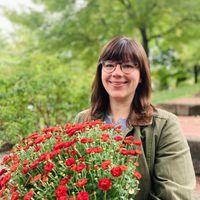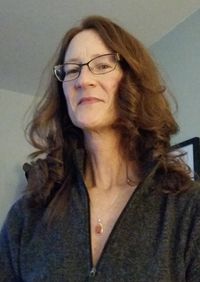7 Affordable Lawn Care Tips For Gorgeous Grass That Will Save You Tons Of Green
Grow a lawn that looks like a million bucks without breaking the bank. Just follow these 7 affordable lawn care tips.

With the price of groceries and just about everything else on the rise, many of us are looking for ways to cut back—including in our landscapes. A good place to start is by creating an affordable lawn care plan for your yard.
Proper lawn care is a necessary, but often expensive, part of maintaining a home landscape. So finding any way to cut back can make a big difference in your bank account. Professional lawn care companies in the U.S. charge on average between $50 and $150 per mow, depending on the size of your yard and where you live.
That can really add up over the course of the summer, even if you’re only mowing every other week. Then add the cost of fertilizing, weeding, aerating, and dethatching. The cheapest route is to take care of your lawn yourself, but even that can end up breaking the bank.
Thankfully, there are ways to decrease costs without sacrificing the health or curb appeal of your lawn. Follow these simple money-saving tips for gorgeous grass that looks like a million bucks.
Affordable Lawn Care Tips
These cheap lawn care tricks will keep your yard lush and you flush with cash. Check out our experts’ top tips for a yard you and your wallet will love.
1. Choose an Efficient Lawn Mower

The first step towards affordable lawn care is choosing the right mower. This seems elementary, but there are many different types of lawn mowers available. You can choose a gas, electric, or manual push mower.
Manual reel mowers are the most affordable because they don’t require gas or electricity, just your own muscle. You can find reel mowers for under $100, like this highly-rated mower from Home Depot, making them a budget-friendly addition to your lawn care arsenal.
Sign up for the Gardening Know How newsletter today and receive a free copy of our e-book "How to Grow Delicious Tomatoes".
If you have a large lawn, a manual reel mower is probably not the best option. Instead opt for an energy-efficient motorized lawn mower that won’t waste gas or need constant charging. Our Digital Community Manager and former garden center manager swears by Ryobi’s electric yard equipment.
Home Depot carries tons of Ryobi's electric lawn mowers, many of which come with interchangeable batteries you can use on their other electric landscaping tools.
2. Follow the One-Third Rule

How you mow your lawn is more important in the long run than what type of mower you use. The one-third rule, also known as “mowing high,” is when you only cut off the top ⅓ of your grass each time you mow.
Mowing high is better for the health of your lawn requires less mowing, which in turn saves you money on gas, electricity, or time. If you let grass get too long, it makes it harder for clippings to break down in the soil and makes your grass more difficult to cut.
3. Leave Your Grass Clippings
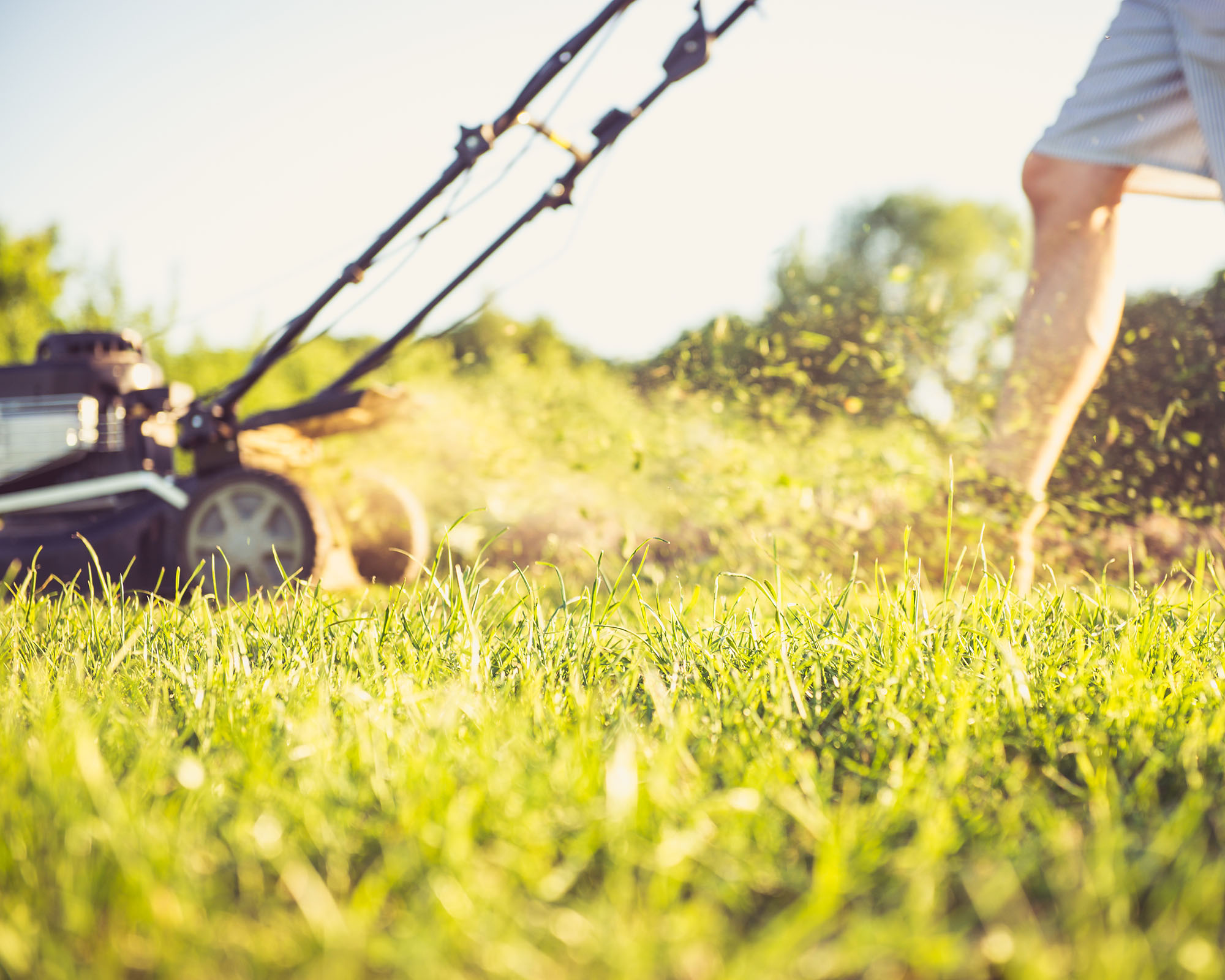
Lots of people think you need to bag your grass clippings. In fact, leaving the clippings in your lawn adds nitrogen back into the soil. This reduces the need for fertilizer and saves you money you’d normally spend on lawn feed.
Leaving the clippings behind also shades the soil, reducing the need for water. If you like to let your grass grow longer between cuttings, invest in a mulching mower that chops up the clippings and helps them break down faster. If you leave clippings that are too long, though, you could end up causing other problems like thatch.
3. Maintain Your Mower
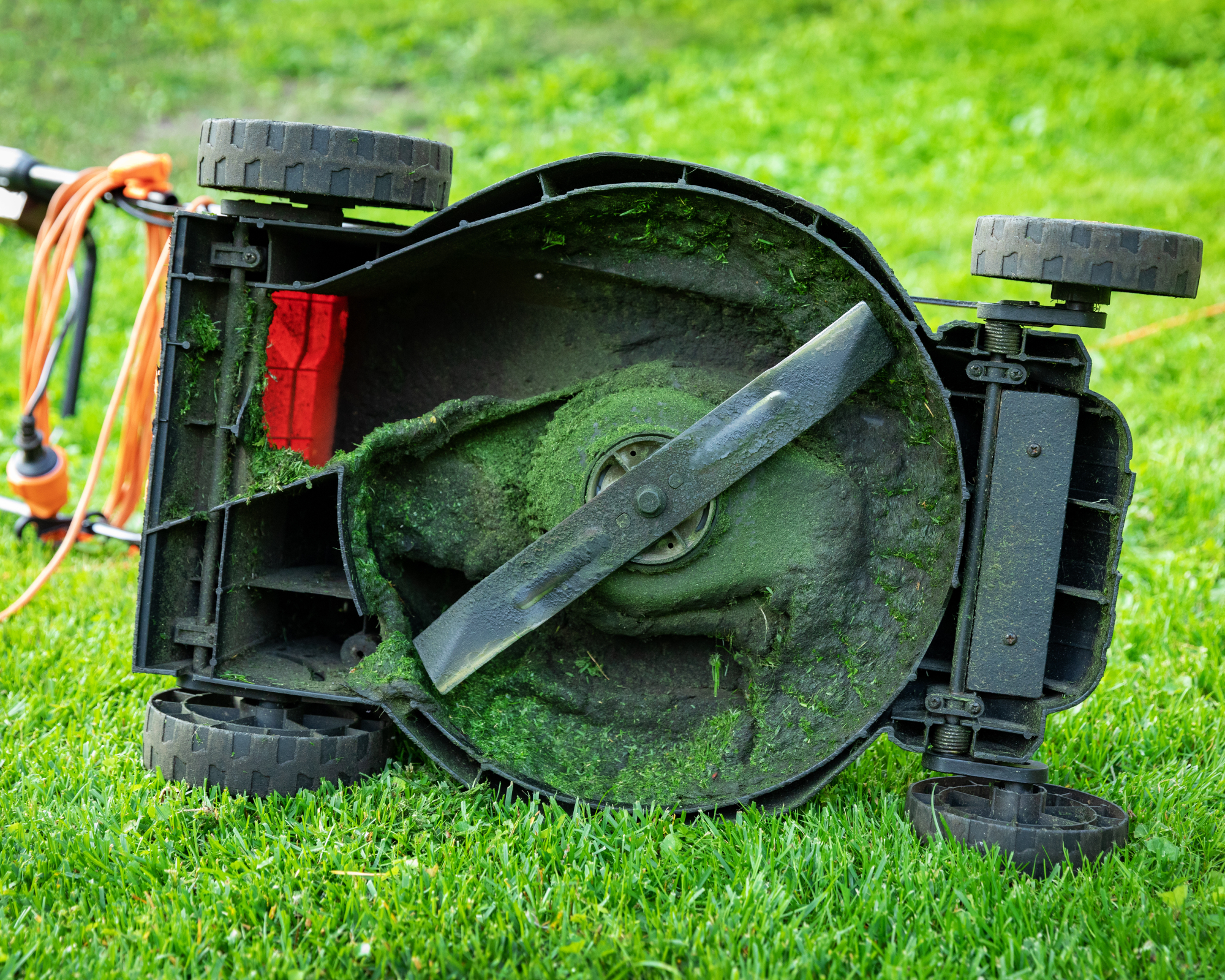
It is also important to maintain your mower to keep it in proper working condition and help it last a long time. You can’t do a good job without your mower being in tiptop shape.
This means giving your mower an annual tune-up before the season starts. For a gas-powered mower you should change the oil, replace the spark plugs, and check the air and fuel filters. At the end of the season add a fuel stabilizer to prevent carburetor problems next spring.
You should also clean your mower at the end of every season, whether it's gas, electric, or manual to prevent rusting blades. At the start of the season, sharpen the blades to make mowing easier. Get a universal lawn mower sharpening and balancing kit from Home Depot that works on whatever type of mower you have.
5. Water Once a Week
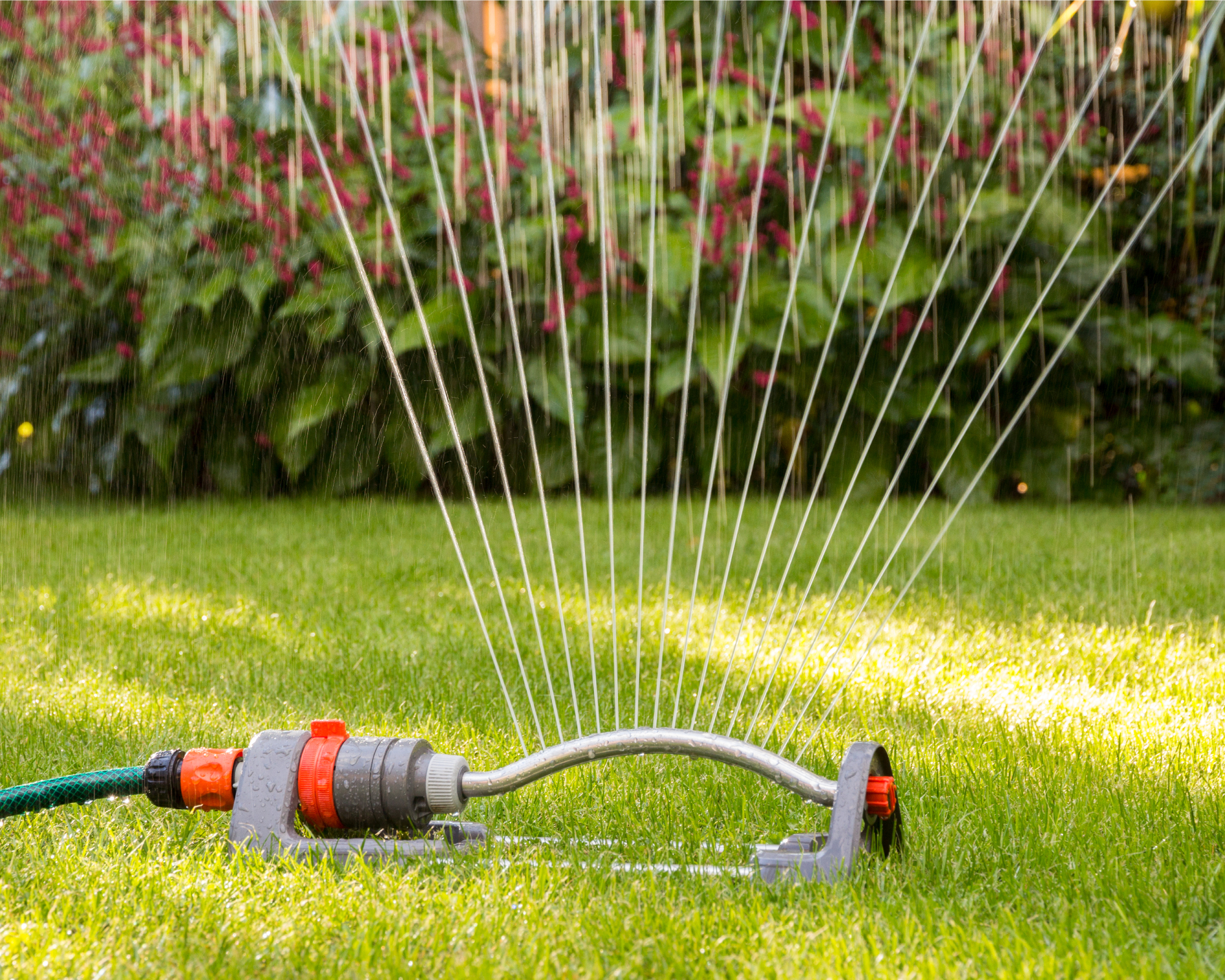
Some people have built-in lawn irrigation systems and some move sprinklers from spot to spot around their yard. If you want to save money on watering the lawn, you need to make every drop count. This means watering infrequently but deeply.
Water your lawn deeply once a week to allow the root system to grow deeper in search of water. The best time to water grass is in the morning. Avoid windy days to reduce evaporation loss.
If you are willing to sacrifice that lush look, it’s also okay to quit watering and allow the turf to go dormant. It will green up when temperatures drop in the fall. Some communities suffering through drought won’t even make this an option. It is mandatory in order to save water for more important concerns.
6. Don’t Over-Fertilize
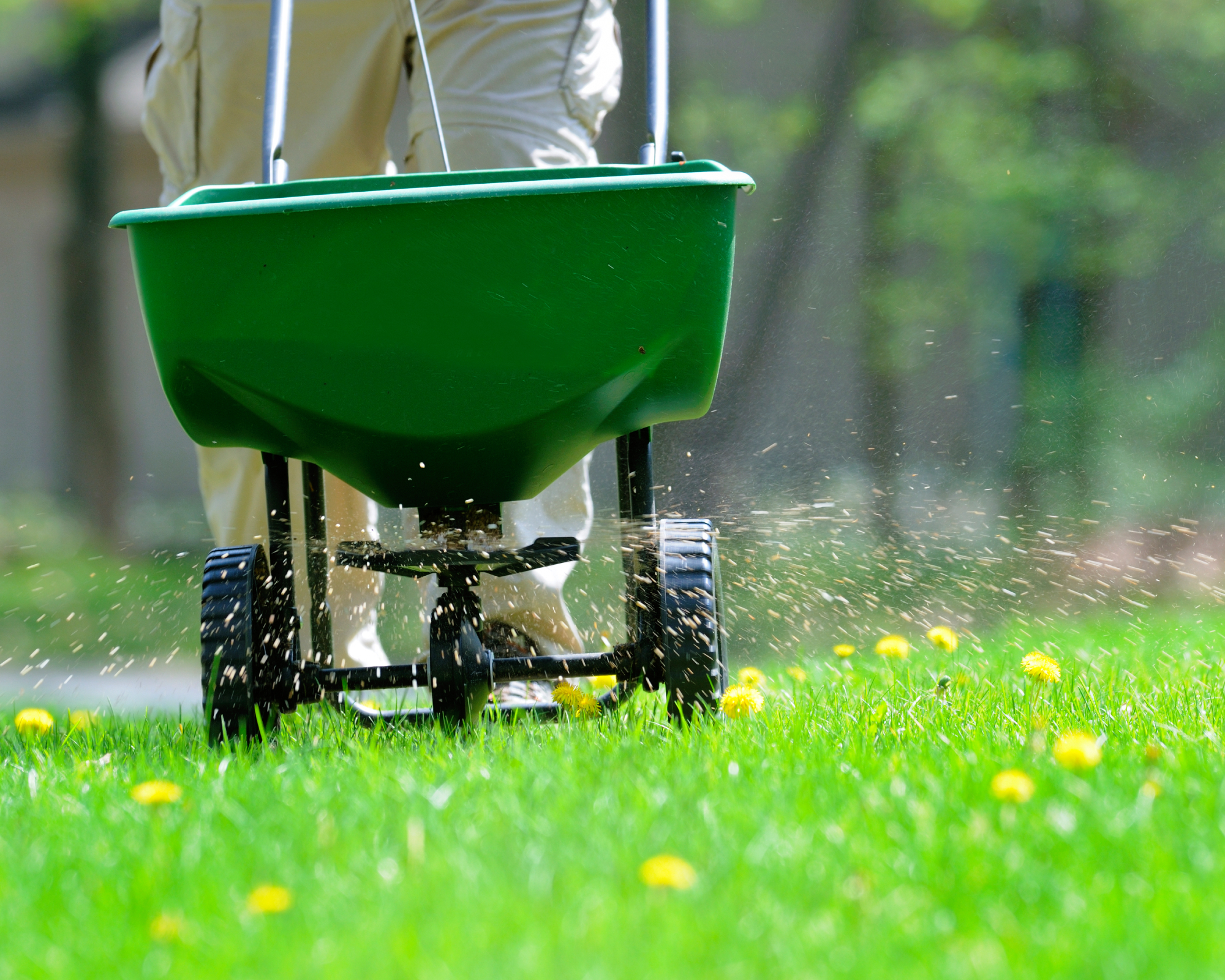
We’ve already talked about leaving lawn clippings to add valuable nitrogen back into the soil, but what else can you do to cut the cost of fertilizing your lawn? Despite what some people say, you only need to fertilize your lawn once or twice per year.
For cool season grasses, the first and most important application of fertilizer should happen around Labor Day. At this time, temperatures have cooled and there is often a bit more moisture so roots are growing. Fertilizing grass in fall will help foster a healthy root system.
Fertilize warm season grasses around Memorial Day, once grass has started to green up again. To cut back even more on costs, try a homemade lawn fertilizer or choose an affordable all-purpose lawn fertilizer like this one from Scotts on Amazon.
7. Embrace the Weeds

More and more gardeners are beginning to believe that a weedy lawn is actually a good thing. Many common weeds, like clover and dandelions, are pollinator magnets and support beneficial insects. Embrace the weeds in your grass for a more sustainable lawn that bees and butterflies will love—as well as one that saves you money on weed killers.
However, if you wish to rid the lawn of weeds, the most cost-effective and environmentally-friendly option is to dig them out by hand. Tackle unwanted weeds in spring as they begin to emerge. You can also wait until the end of the season and attack them in mid to late September when they are most vulnerable.
Make the job easier by choosing the right equipment. Content Editor Kathleen Walters says this $35 soil knife is the only tool you need to remove even the toughest weeds. It will make quick work of even the worst dandelions and won’t leave a big hole in your wallet.

Amy Grant has been gardening for 30 years and writing for 15. A professional chef and caterer, Amy's area of expertise is culinary gardening.
